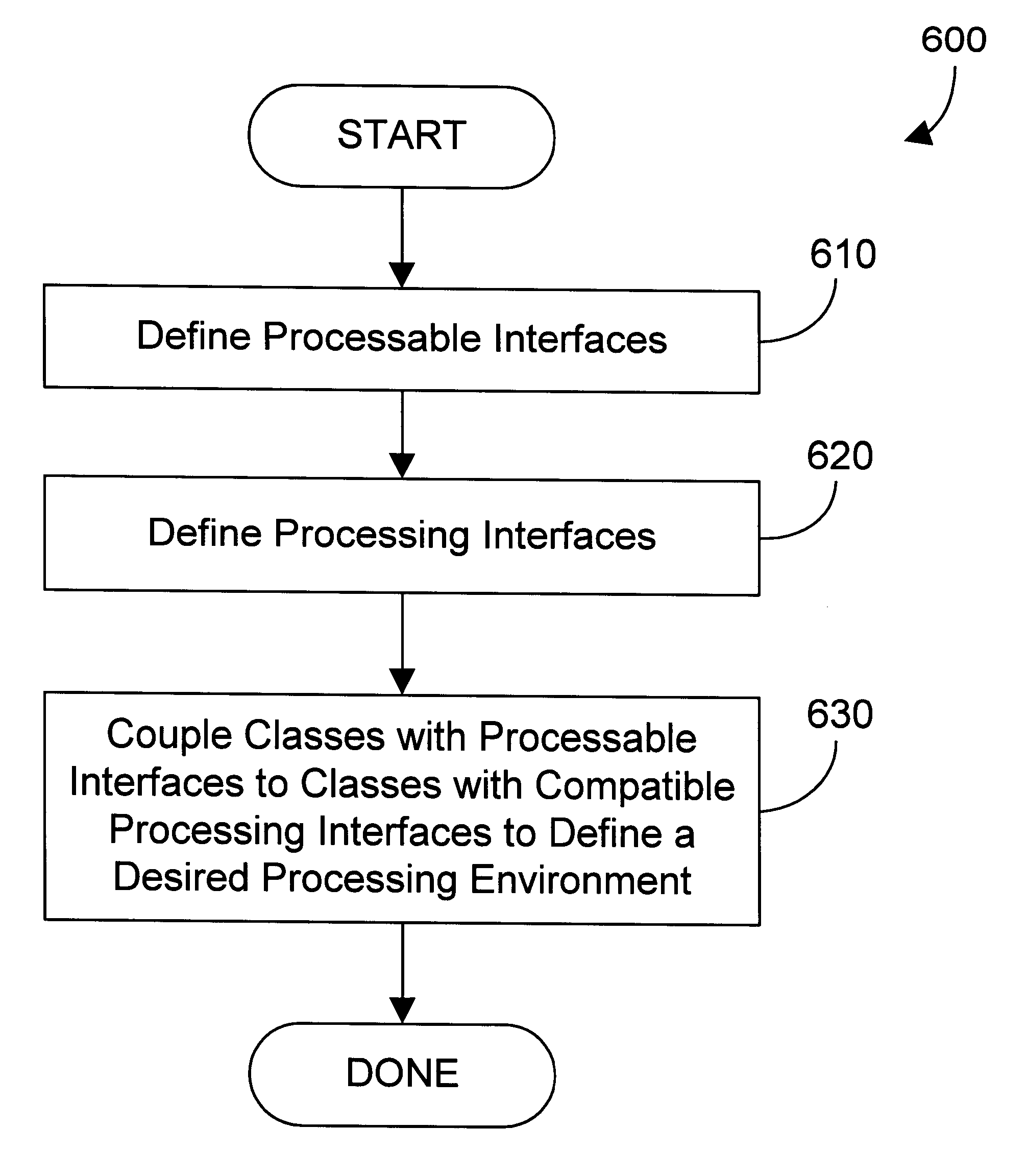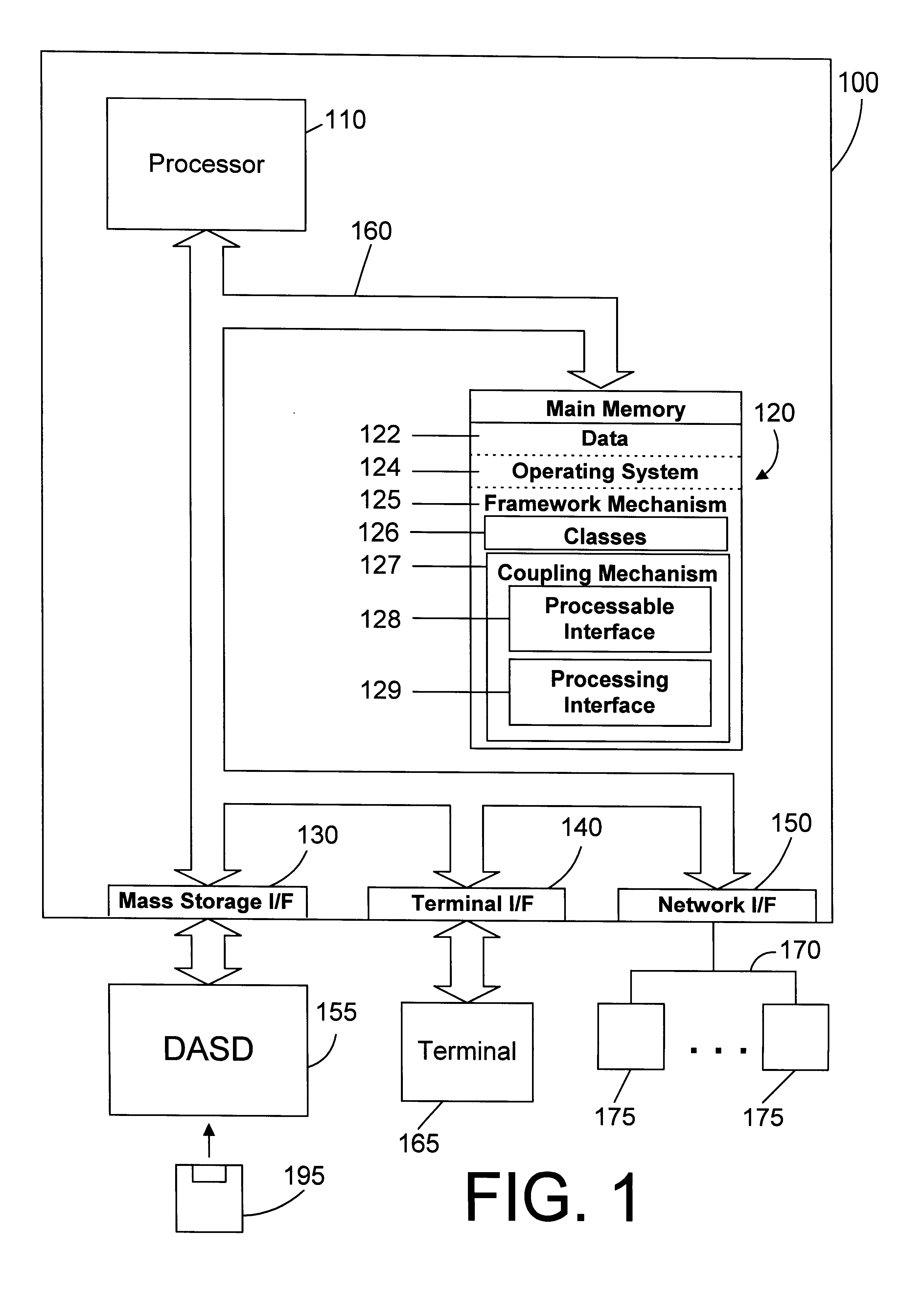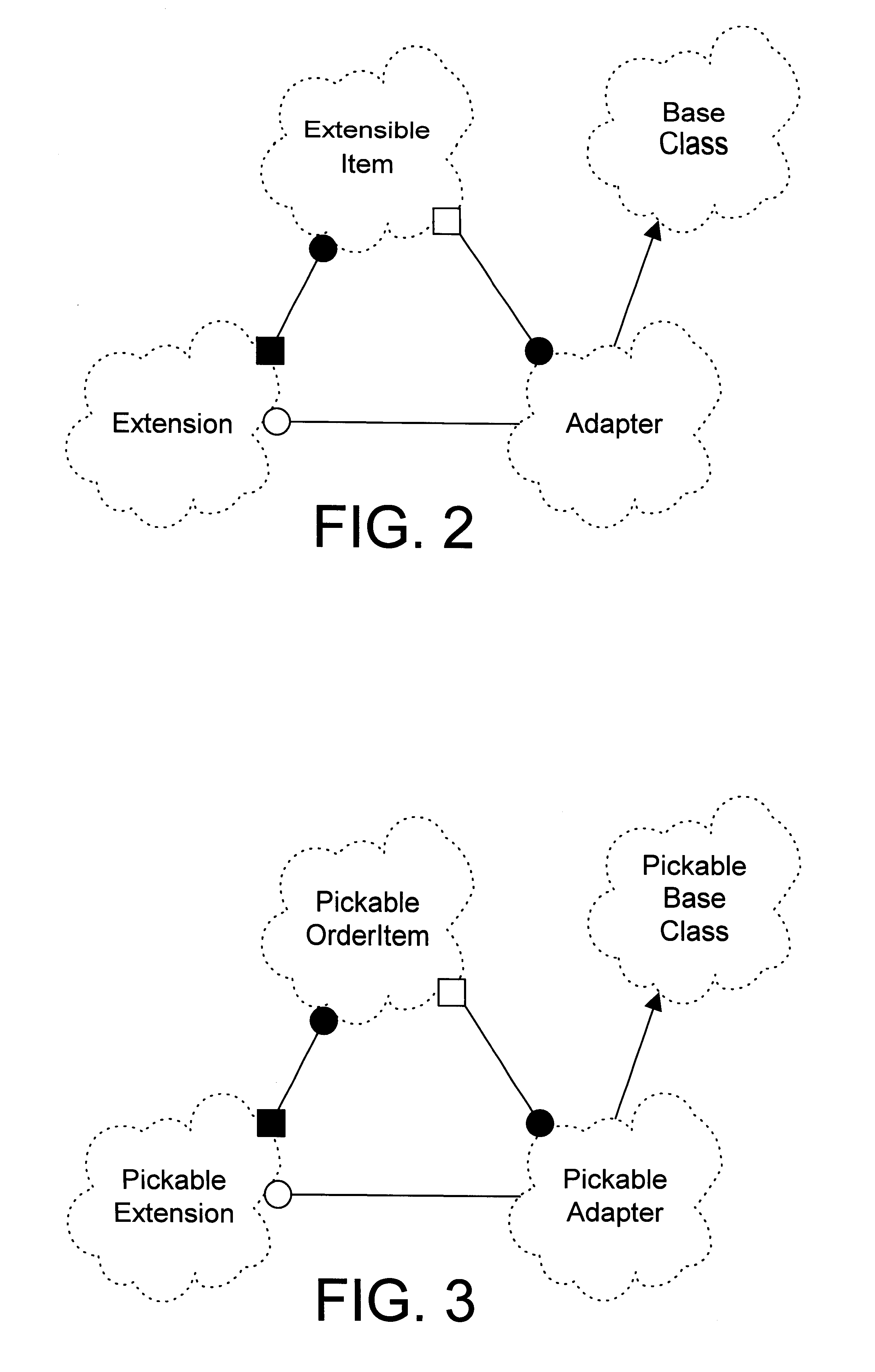Mechanism and method for flexible coupling of processes in an object oriented framework
a process and object oriented technology, applied in the field of object oriented programming, can solve the problems of increasing software development costs, increasing money, and extremely powerful application software programs designed for high-performance computer systems, and achieve the effect of enhancing extensible items
- Summary
- Abstract
- Description
- Claims
- Application Information
AI Technical Summary
Benefits of technology
Problems solved by technology
Method used
Image
Examples
Embodiment Construction
According to a preferred embodiment of the present invention, a mechanism and method provide for flexible coupling of processes in an object oriented framework without changing the core functions of the framework. Interfaces are provided that allow a class to be defined in a way that allows appropriate placement of the class relative to the other classes in the framework to achieve a desired processing environment from extending the framework.
Referring to FIG. 1, a computer system 100 in accordance with the preferred embodiment is an enhanced IBM AS / 400 computer system. However, those skilled in the art will appreciate that the mechanisms and apparatus of the present invention apply equally to any computer system, regardless of whether the computer system is a complicated multi-user computing apparatus or a single user workstation. As shown in FIG. 1, computer system 100 comprises a processor 110 connected to a main memory 120, a mass storage interface 130, a terminal interface 140,...
PUM
 Login to View More
Login to View More Abstract
Description
Claims
Application Information
 Login to View More
Login to View More - R&D
- Intellectual Property
- Life Sciences
- Materials
- Tech Scout
- Unparalleled Data Quality
- Higher Quality Content
- 60% Fewer Hallucinations
Browse by: Latest US Patents, China's latest patents, Technical Efficacy Thesaurus, Application Domain, Technology Topic, Popular Technical Reports.
© 2025 PatSnap. All rights reserved.Legal|Privacy policy|Modern Slavery Act Transparency Statement|Sitemap|About US| Contact US: help@patsnap.com



